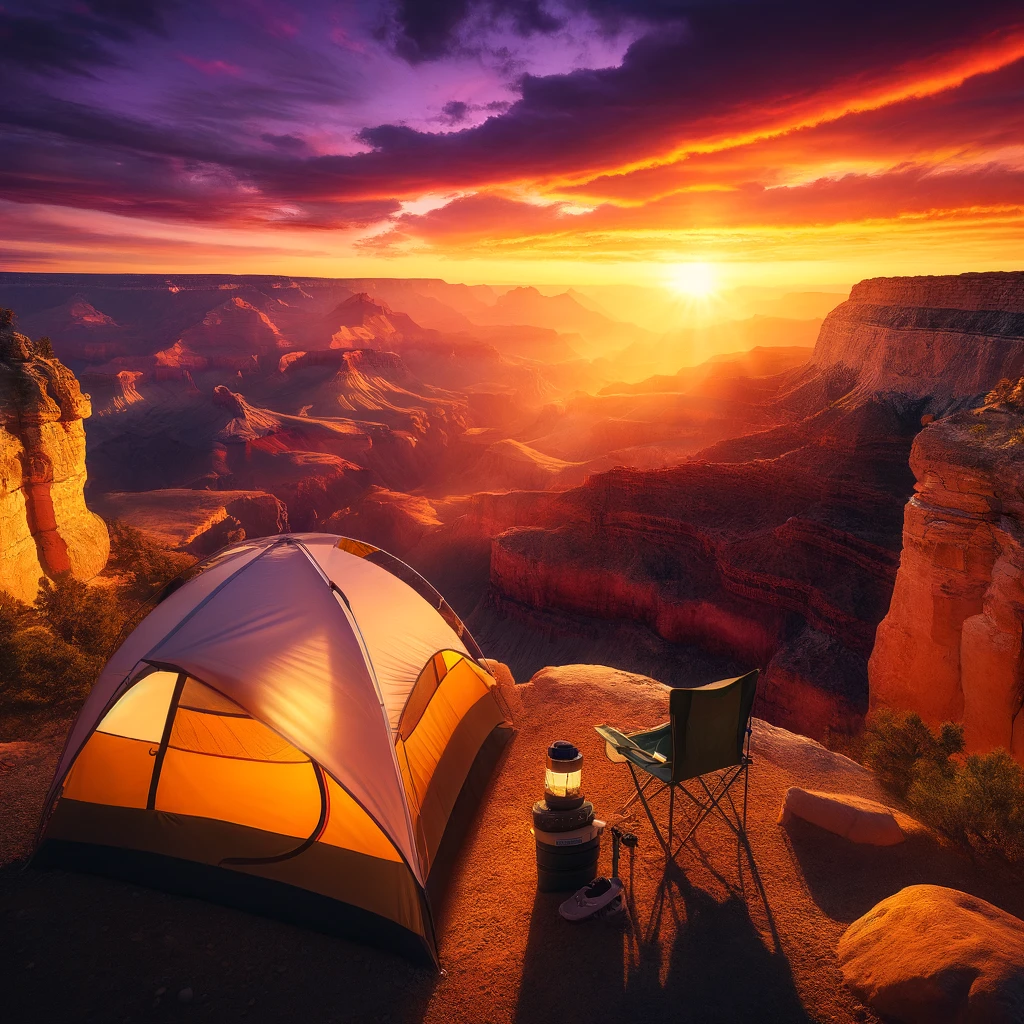Choosing a suitable campsite is a crucial skill that can make or break your tent camping experience. Whether you’re a novice camper or looking to refine your site selection skills, this comprehensive guide will walk you through the essential factors to consider when picking the perfect spot to pitch your tent.
Understanding Campsite Types
Before diving into the specifics of site selection, it’s essential to understand the two main types of campsites available: developed campgrounds and dispersed camping areas.
Developed campgrounds offer amenities such as restrooms, picnic tables, and sometimes even showers. They’re ideal for beginners or those who prefer a more structured camping experience. Reservations are often required, especially during peak seasons.
Dispersed camping, however, allows you to camp on public lands outside designated campgrounds. This option offers more solitude and an authentic wilderness experience but requires more self-reliance and adherence to Leave No Trace principles.
Essential Factors for Campsite Selection
Terrain and Ground Conditions
The foundation of a good campsite is quite literally the ground beneath your tent. Look for a level area that’s large enough to accommodate your tent and gear. Avoid low-lying areas that could flood during rain and steer clear of natural hazards like dead trees or loose rocks that could pose a danger.
Water Sources and Drainage
Access to water is crucial, but it’s equally important to maintain a safe distance from water sources. The general rule is to camp at least 200 feet away from lakes and streams to prevent contamination and minimize impact on wildlife. Additionally, assess the area’s natural drainage to ensure you won’t wake up in a puddle if it rains.
Sun Exposure and Shade
The perfect campsite balances sun and shade for optimal comfort. Some shade is desirable in hot weather, while a sunny spot can help keep you warm in cooler conditions. Consider the sun’s path and how it will affect your site throughout the day.
Wind Protection
Natural windbreaks like rock formations or dense vegetation can significantly improve your camping comfort. When setting up your tent, orient the narrowest end towards the prevailing wind direction to minimize resistance.
Safety Considerations
Safety should always be a top priority when selecting a campsite. Be aware of potential wildlife in the area and practice proper wildlife safety and awareness for tent campers. This includes proper food storage techniques to avoid attracting animals to your campsite.
Familiarize yourself with fire regulations in the area and always follow safe fire practices. Additionally, consider emergency access and cell phone coverage when choosing your site, especially if you’re camping in a remote area.
Comfort and Convenience Factors
While embracing nature is part of the camping experience, certain conveniences can enhance your trip. If you’re staying in a developed campground, consider the proximity to amenities like restrooms and water spigots. Ensure you have enough space for your activities and gear storage, and look for natural features that can add to your comfort, such as trees suitable for hanging hammocks.
Environmental Impact and Leave No Trace Principles
As responsible campers, it’s our duty to minimize our impact on the environment. Choose durable surfaces for your campsite to avoid damaging vegetation. Practice Leave No Trace principles by properly disposing of waste and leaving your campsite as you found it—or even better.
Seasonal Considerations
Your campsite selection should adapt to the seasons. For seasonal tent camping tips for every time of year, consider factors like sun exposure in summer for shade and wind protection in winter for warmth. Each season brings its own set of challenges and opportunities, so plan accordingly.
Tools and Resources for Campsite Selection
Take advantage of available resources to help you find the perfect campsite. Use maps, guidebooks, and online resources to research potential camping areas. Many apps now offer detailed information about campsites, including user reviews and photos. Don’t hesitate to contact local ranger stations or visitor centers for the most up-to-date information on camping conditions and regulations.
Common Mistakes to Avoid
Even experienced campers can make mistakes when selecting a campsite. Some common pitfalls include ignoring weather forecasts, underestimating the space needed for your gear, and overlooking campground rules and regulations. Always do your research and be prepared to adapt your plans if necessary.
Conclusion
Selecting the ideal campsite is an art that combines practical considerations with an understanding of nature and your own comfort needs. By considering factors such as terrain, water sources, safety, and environmental impact, you can ensure a comfortable and responsible camping experience. Remember, practice makes perfect—each camping trip is an opportunity to refine your site selection skills. So pack your tent, grab your gear, and head out to find your perfect spot in the great outdoors!

Leave a Reply